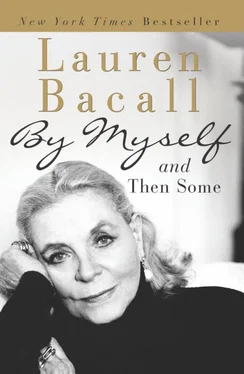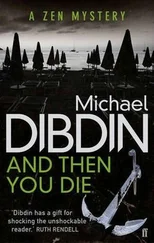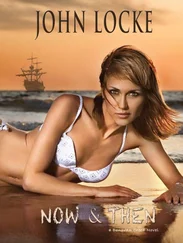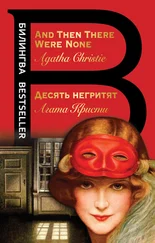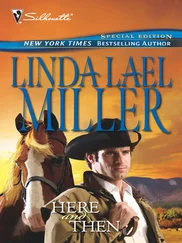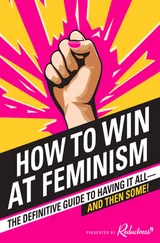Diana asked me if I could go to St Augustine, Florida, for two weeks of pictures for the May issue. She’d take another girl along – Eileen McLory, a nice girl and good model whom I knew a little – and Dahl-Wolfe. Would I ask my mother? Diana would be happy to explain it all to her.
I was excited – I’d never been to St Augustine, the oldest, and one of the quaintest cities in America. I rushed to tell Mother, who, of course, was pleased for me but who, of course, wanted to be assured by Mrs Vreeland that I would be well looked after. There was a war on, St Augustine was on the sea, and there’d be a lot of servicemen around. Still so protected at eighteen. My old-fashioned mother. She spoke with Mrs Vreeland and, having had her fears and apprehensions put to rest, agreed that I could go.
So I packed for my first location work – it was the first week in December and we’d be returning to New York by the 20th or 21st. We boarded the train – Diana Vreeland, Louise Dahl-Wolfe, and her husband, Mike, Eileen McLory and myself, plus boxes of film, reflectors, Louise’s cameras. Everything very compactly put together for travel. All pictures were to be shot outside in natural light, so we’d have to start early in the morning.
In Florida the air was balmy, palm trees everywhere, tropical in feeling, so different from New York. We arrived at the recommended hotel, which turned out to be the ninth-best hotel in St Augustine. It and all the others were being taken over by the Seabees. Eileen and I shared one room. Diana had hers – the Wolfes theirs. The town was charming – horses and carriages, great, burly, friendly black men with top hats driving them. The place had not been spoiled by what is laughingly known as progress – all the old torn down to make way for the new, the shiny, the ugly.
I remember going into Diana Vreeland’s room one evening as she was sitting in her one-piece undergarment – not a girdle, it was all easy, like thin knitted cotton or wool. She was rolling her hair with eau de cologne – she found it dried quickly, worked well. We talked of how the work was going. I talked more of my ambitions, my dreams. We talked of the hotel. More Seabees were moving in – she said to pay no attention to the young freckled-faced porter who seemed drunk on sherry. Eileen and I were not to wander around on our own, especially as the evening approached.
The work was finally done and we were to leave the next evening on the night train for New York. Diana told me I was to pretend to be her pregnant daughter – that was the only way we’d got our tickets, because servicemen had priority. I didn’t know until years later that she’d been sitting in the hotel bar near the president of the railroad and overheard his name. And the next day she’d walked two and a half miles in the rain to the train station and told her sad story to someone there – her little girl was going to have a baby; the railroad president, a good friend, had told her to mention his name when necessary, and of course she realized the Armed Forces had priority – there was a war on – there were five of us – it was so important for her little girl. Talk of acting – what a character! She got the tickets. They must have bumped someone. All Diana knew was that she’d told my mother she’d get me back and that’s what she aimed to do. That’s why she flourished. Talent – her gift of creativity – is not enough – determintion, perseverance, resolution, that’s what makes the difference.
It was a very funny scene. The train jammed with servicemen heading home for Christmas, not too many civilians in sight. Our group boarding the train – me leaning on Diana for benefit of porters, conductors, God knows who – playing the death scene from Camille – trying to be brave – feeling a bit faint – where did I ever get that idea of pregnancy? Diana saying, ‘There, there, dear. Take it easy now, you have to rest.’ Not the best acting I’d ever seen – we were both overdoing it. Finally got into a seat – berths were going to be made up before dinner or during. Dinner was a mess. As the train was so jammed, we didn’t dare leave all the seats untended, so I sat in my ‘weakened’ condition while Diana and Eileen scrounged for food. Diana could certainly function. She did what had to be done. No wonder she had so much clout in the fashion-magazine world. They came up with something finally – enough – and word was passing through the train that Martha Raye was in the club car entertaining the servicemen. She had been traveling overseas to do that. I was dying to see her – anybody connected with show business gave me a boost. I was determined to get to that club car. Diana was determined that I shouldn’t – ‘Remember you are not very well, Betty – you must think of the baby.’ We might be put off the train at any stop if we were discovered. ‘I need to get my mind off myself for a while, Mother.’ I got to that club car. Martha Raye was sitting with a drink in her hand, talking to everyone in the car, cracking jokes, singing songs. I huddled in a corner and never took my eyes off her until finally, not to press my luck, I consented to go back to the berth with Diana. It must have been about two in the morning when I got to bed, being carefully and noisily, for the porters’ benefit, tucked in by my ‘mother.’
The January issue of Harper’s Bazaar was on the stands at the end of December and many copies were sold to the Bacalls and Weinsteins of the world. Only one picture, but it was my first in a national magazine and everyone cared about that. There would be more in the February issue. Diana had told me I’d be very happy with those. I had posed in white blouses. It was to be a double-page spread – the other models were Martha Scott, who’d had a great success in Our Town , and Margaret Hayes, a promising young actress.
In January I posed in a blue suit with an off-the-face hat, standing before a window with ‘American Red Cross Blood Donor Service’ lettered on it. It was a color picture and would be a full page.
Mid-January Diana showed me the February issue of Bazaar . There on the double-page spread of the two actresses and me in blouses, alongside one of my pictures was printed: ‘Worn by the young actress, Betty Becall’ (my name misspelled, but who cared?).
I almost fainted, I was so happy. I hugged Diana – hugged everyone in sight. You’d have thought my name was up in lights – it was my name, in print, even spelled wrong, and that would do for the time being.
About mid-February Diana called my mother to tell her there were stacks of letters on her desk asking who I was and where I could be reached. She said, ‘Listen, Mrs Bacall, I think Betty’s too young to make these decisions, so I’m sending it all on to you.’ Diana was always terrific to me and about me. She was so smart, had such wisdom. Also it turned out that the Blood Donor picture was going to be on the March cover. The cover! I couldn’t believe it when I heard; there’d be no living with me now.
Mother showed all the letters she thought might be important to my Uncle Jack. He did represent Look magazine – he was the wisest lawyer in the family for business and the entertainment world. Charlie was involved in city-government law.
There was an inquiry from David O. Selznick’s office. Someone who worked for him had told him there was this girl who looked something like K. T. Stevens, whom he had discovered – he ought to take a look at her, possibly test her. They asked for more photographs of me. Then Howard Hughes had made an inquiry. Jack felt we should move very carefully on all this. Obviously there’d be other inquiries as a result of the Bazaar cover, let’s work slowly, wait awhile. He talked to Mother first before I heard anything, wanting to make sure she understood it all. He also knew I’d be so hysterical that I might accept the first offer made, not knowing anything about the movie world.
Читать дальше
